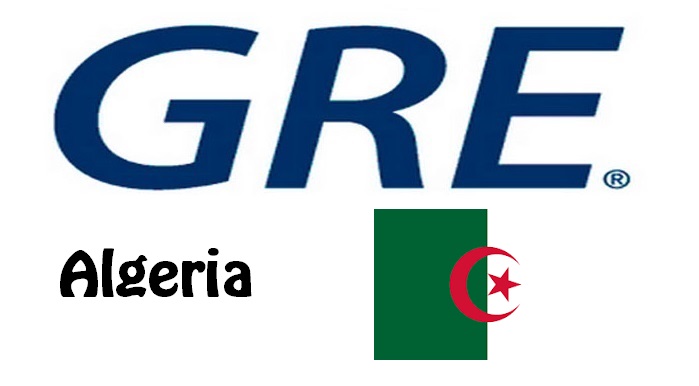GRE Testing Locations
Decided to take GRE exam? Now it is time to determine where to take the test. This site provides a full list of GRE testing centers in Algeria, among which, you can choose one that is nearest to you. Good news is that the following GRE test locations in Algeria offer both GRE general test and the GRE subject tests.
Paper-delivered Test Centers for General Test
| Code | Name |
| 10034 | Algiers, Language Services |
GRE Test Dates
There are two types of test format offered by the test maker – ETS: Computer-delivered and Paper-delivered GRE general tests. For computer based test format, the GRE General Test is offered year-round on a continuous basis, and available for registration on a first-come, first-served basis. For paper based general test, testing is available three times per year. The following test dates apply:
| Test Dates for Paper Based | Deadlines for Registration | Scores Available |
|---|---|---|
| November 09, 2019 | October 4, 2019 | December 20, 2019 |
| February 1, 2020 | December 27, 2019 | March 13, 2020 |
GRE Subject Tests in Algeria
The GRE Subject Tests are available on paper based only. In all GRE test centers throughout the world (both inside and outside United States), the exam is available three times a year. The three test dates are:
- April
- September
- October

More about Algeria
Algeria is the largest country in Africa in terms of area. It is bordered by Morocco in the northwest, Western Sahara in the far west, Mauritania and Mali in the southwest, Niger in the southeast, Libya and Tunisia in the east. Northern Algeria is divided into three landscape areas parallel to the coast, to which the western Sahara connects to the south.
The 50–100 km wide coastal region with the Tell Atlas (in the Djurdjura 2,308 m above sea level) adjoining it to the south has sufficient winter rainfall for Mediterranean vegetation and agriculture in the valleys and coastal plains (Mitidja). To the south follows the Schotts highlands, 400–1,000 m above sea level, with salt plains without drainage; this semi-arid steppe area (alfa grass) is the habitat of a semi-nomadic population. Only the eastern plateaus around Constantine have sufficient irrigation for profitable grain cultivation.
The Sahara Atlas as the third landscape unit is made up of several mountain massifs that reach 2,328 m above sea level in the east in the Aurès. The high altitude region has remains of forest cover and represents a humid island within the steppe highlands.
A steep drop to the south leads over to the Sahara, to which 85% of the national territory belongs. The largest landscape units of the Algerian Sahara are the dune areas of the western and eastern Great Erg, the Tademaït plateau, the volcanic Hoggar massif (Ahaggar; in the Tahat up to 2,918 m above sea level) and the canyon-rich Tassilibergland, whose vegetation is the Tuareg as the basis of life serves. In the northern part of the Sahara there are large oases with thousands of date palms.
Climate
The climatic zones follow the landscape areas parallel to the coast. The Mediterranean climate of the coastal region with warm, rainy winters and hot, dry summers still affects the Tell Atlas region in a weaker form, but here the annual rainfall is already falling significantly and the temperatures show greater seasonal fluctuations. The continental climate of the highlands of the Schotts has extremely hot summers, the annual rainfall drops below 300 mm; In winter nights, as in the Sahara, frost can occur. The extremely arid climate of the Sahara is characterized primarily by rain that falls only episodically, the midday temperatures in summer rise in extreme cases to over 54 ° C (El Oued station).
There are permanent rivers (not navigable) only in the coastal zone (the largest is the Chéliff); In the highlands and in the desert, the valleys of the dry rivers (wadis) are only traversed episodically.
Vegetation
The hardy scrub of the maquis thrives on the coast, a light forest of Aleppo pines, thuja species, stone and cork oaks in the coastal chains. The Schotthochländer are forestless and are occupied by steppes of wormwood bushes and alfa grass. The Sahara Atlas is predominantly mountain steppe. It only shows remains of the forest with Aleppo pines, holm oaks, junipers and cedars on the slightly more humid north side of the Aurès. In the Algerian desert, the vegetation is limited to the wadis, the edge areas of the dunes and other groundwater-favored regions.

